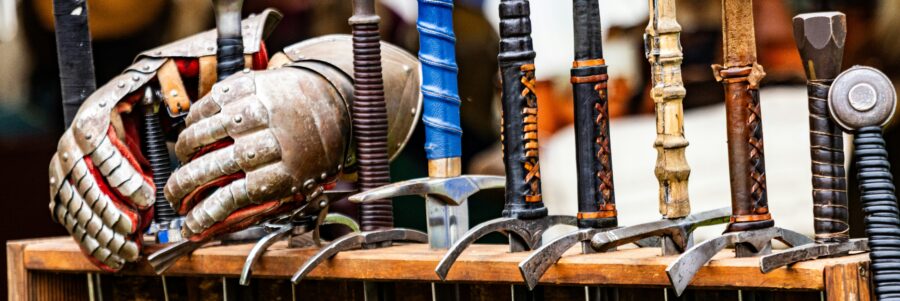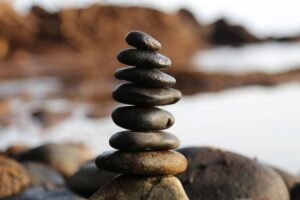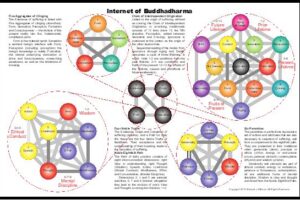Sword of Manjusri – Cutting through all delusive ideology
Following on the previous UnMind series of three segments on aging, sickness and death, the Three Marks of Buddhism’s worldview, we will expand our scope to the broader world of international conflict, characteristic of our modern world, where Buddhism’s three conditions of existence are also manifested, if in a more universal form. Traditional definitions of these basic aspects of life are universal in scope: impermanence, unsatisfactoriness, and no-self (Skt. anicca, dukkha, anatta). We can see clearly that in today’s world, these givens of existence are not warmly embraced on the social level in America, let alone on national or global levels, which surely follows from their avoidance on the personal level.
Beginning with Buddhism’s “compassionate teaching” – the Dharma – we find that along with the three marks of aging, sickness and death, Buddha promulgated the “Three Poisons,” usually rendered as “greed, anger or hatred, and delusion or folly.” What a witch’s brew is conjured, when we mix the six ingredients together.
In the context of aging, greed becomes the longing for longevity, the overreliance on meds to avoid the ravages of illness, and extravagant, catastrophic efforts at prolonging life at all costs. Anger and hatred arise when we are denied the ability to forestall aging, when we are overcome by a pandemic, and when we blame widespread death and destruction on others. Delusion and folly ensue when we act on our mistaken beliefs, attacking others for the natural consequences of our collective and individual actions. The unexpected consequences threaten us all, whether in our dotage or full-flowering youth, with the Four Horsemen – plagues, famine, and the predations of war, and not necessarily in that order. Just who is to blame for this situation and how can we hold them accountable?
In the worldview of Zen, everything, including charity, begins at home. To quote Master Pogo Possum, “We have met the enemy, and he is us.”
The first embrace of reality is to “study the self.” The second is to “forget the self,” as Master Dogen reminds us in his famous teaching, Genjokoan–Actualizing the Fundamental Point. Actualizing the fundamental point of existence requires that we embrace our own aging, sickness and death – the close-up-and-personal reality of impermanence, imperfection and insubstantiality, including our precious self – while recognizing that greed, anger and delusion are fueling the fires of discontent, leading to blaming others for our personal predicament. Sometimes, others are to blame for making things worse, of course, just as we are to blame for making their world more crowded. Stop the world and let me get off. Would it were so simple.
The blame game can range from blaming our parents for our birth, on one extreme, to blaming those others most distantly related to us by blood. I read somewhere that the furthest removed any human being can be from any other human, biologically speaking, is something like 26th cousin, if memory serves. One wonders, with the growth in population, whether that tenuous kinship is getting
closer, or further apart, as time goes by, with 8 billion people and counting.
I also read of a laboratory experiment, some years back, where they used the classic maze of rats to find out what happens when you simply keep adding rats to the maze, without letting any escape. At one point of increasing density, the rats begin attacking each other. They “blame” the others for their own discomfort, apparently. The analogy to human population should not be lost on anyone. The anxiety and outright hostility associated with immigration on a global basis is too obvious a parallel to ignore.
Or we can aim all of our blame at the political system, or the candidate du jour. Now that the “debate of the century” has landed with a thud, the rats are having a hard time deciding which of the two leaders of the rat pack is most at fault.
Much of the anger and hysteria we witness on ideological and political fronts of the public discourse seem motivated by underlying fears, exacerbated by perceived worsening conditions, including density of population. The identified “foreigners” – bringing unintelligible languages, peculiar cultural customs, and bizarre belief systems – induce anxiety, stereotyping and suspicion amongst native populations,
triggering the threat of the privileged being “replaced” by them in the great scheme of things. This probably arises from a tribal, protective social instinct, linked to the survival of “our kind.” Hyped to the max by political opportunists, into the bargain.
But on a more personal level, this anxiety, amplified by mob hysteria, surely finds its origin in the triple threat of aging, sickness and death, that is inborn with each individual. Birth is the leading cause of death, after all, like it or not.
This perceived threat, however irrational, is tied to what biologists call the survival instinct, or imperative. Reality is not a respecter of persons. But biology is designed to privilege survival of the species over all comers, adapting to everchanging circumstances. Natural and artificial changes in context often outpace and outmaneuver biology, engendering threats to survival, to cycles of “extinction panic,” or to actual extinction of the species, potentially including humanity. Cultural evolution – our ability to pass on technological advances to the next generation, and their ability to further improve on their cultural inheritance – is ensconced in the social sphere. But it likewise runs into trouble when it is not agile
enough to keep up with the rate of change of conditions to which it is adapting, in the natural and universal spheres. Such as climate change. Aye, there’s the rub.
“Survival of the fittest” is the shorthand catchphrase for dumbing down Darwin’s elegant and complex theory on the “Origin of Species.” To find a cogent example of society’s collective resistance to this notion that we privilege the fit, we need look no further than the recruiting, drafting and conscription of young men and women – the “fittest” – into the modern military – the main mechanism oriented to societal survival – across the globe. Civilian leaders, and those at higher command levels, manage to keep a safe distance from the front lines, so as to return to fight another day, one assumes. But the survival of the oldest is not Nature’s way. It is not natural to put younger members of the species at risk to
protect older members. Witness the wolf pack.
This biological imperative dictates an age-related triage, protecting those most likely to survive, to survive longer, and to reproduce. Yet humans do the opposite in wartime, and did it again in the face of the pandemic, by sending younger first responders into the fray, while protecting elderly and senior leaders through isolation, quarantine and access to medical care. Notwithstanding how miserable a failure that effort turned out to be, the point is still well-taken. Of course, from a practical perspective, the young provide the necessary numbers, and the vitality, needed on the frontlines. Even if senior members of society were willing to take point in crisis conditions, the question would be whether or not they are able to.
Setting aside such considerations of the neurotic societal implications of turning younger generations into cannon and virus fodder, what will it take to finally bring about world peace? Can we beat our swords into plowshares, turn intercontinental ballistic missiles into spaceships, cyberwar into cyberfun?
The current national debate is styled as a contest between democratic governance“ of the people, by the people, and for the people,” striving toward a “more perfect union” of the republic; versus power elites exerting autocratic control over a hopelessly divided populace. The appeal of the latter is understandable for the “haves,” those who already enjoy a relative elite status of economic and social privilege. They stand to come out on top, liberated from the messy business of compromise with those on the bottom end of income equality. Likewise, the uneasiness of the “have-nots” is easy to understand. They see themselves as already victimized by the unlevel playing field, touted as equal opportunity for all.
This, it would seem, is the real wall that is being built, not on the border, but right down the middle of the country. Its building blocks consist of the institutions installed by the founding fathers, rearranged to reassert the original privilege of white, land-owning males. But is all this – the daily fare being served up by the media and opposing forces – really the root of the problem?
Whether or not we believe in an eternal soul, or reincarnation, as did the ancient Egyptians, Greeks and Hindus, or resurrection, as do modern Christians, we finally come to face our mortality, in person. In Zen, the only mate who will accompany us to the grave is our deeds. Whatever wealth, honor, or powers of reasoning we have accumulated in managing and manipulating the vagaries of behavior and vicissitudes of fortunes encountered in life, they serve us little in the face of death. The same may be said of family, though better to die surrounded by loved ones than alone, or surrounded by hostiles, I suppose.
On the cushion we sit “without relying on anything” as Master Dogen reminds us in his version of “Needle for Zazen (Zazenshin),” including all the tricks, trash and trinkets we have assembled in our toolkit. Try as we might to think our way to enlightenment, or to reason ourselves into insight, we find ourselves failing again and again. Finally we must surrender to the chaos of not knowing, and abandon reliance on reason itself, spawn of philosophy and the other kind of Enlightenment. We find verification of our practice in “making effort without aiming at it.”
Needless to say, this is a very uncomfortable place to find ourselves, at a pass that is not really negotiable, in any ordinary sense. All the stages of grief prove futile in the face of the relentless process and progress of biology. We need to confront reality when we are young and vigorous, as in “Stamp life and death on
your forehead, and never let it out of your mind,” paraphrasing a truth long lost to attribution. Life takes its meaning in the context of death. If you find that too morbid, just imagine what life would be like if we did not die. Its meaning would be entirely different, and not entirely positive.
When the grim reaper arrives, we may want to embrace her / his relentless, unsympathetic and unforgiving scythe, as being not at all different from the sword of Manjusri, hopefully cutting through our final delusions. Just as hopefully, the passing pageantry of life, particularly the concurrent social-political dimension, will have little or nothing to do with the circumstances surrounding the last breath we
take. Preferable to die on the cushion, of course.








